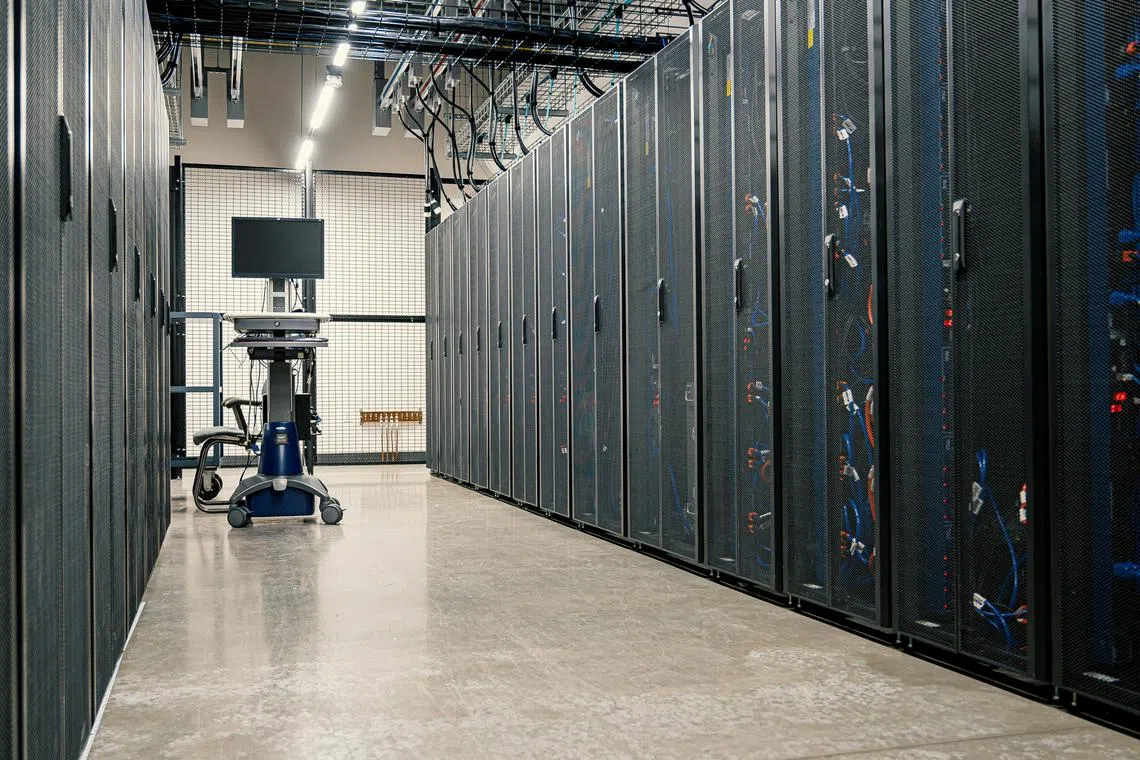Malaysia water regulator to set strict water rules for data centres as number grows
Sign up now: Get insights on the biggest stories in Malaysia

In Malaysia, the government has received 101 applications for data centres as at 2024.
PHOTO: PEXELS
Follow topic:
KUALA LUMPUR – Malaysia’s main water regulator, the National Water Services Commission (Span), is preparing stringent guidelines for data centres to use alternative sources of water instead of potable drinking water for their operations, amid the growing number of such centres.
The guidelines are expected to be ready by the first half of 2025, and will be mandatory for local water providers as part of the approval process for data centre operators in Peninsular Malaysia.
“We don’t want a situation where data centre operators have water and regular Malaysians don’t have water at home,” Span chairman Charles Santiago told a news conference on Feb 10.
“As such, guidelines will include proportions of alternative water sources that can be used, with a strategic aim to achieve zero per cent reliance on potable water in three years at best,” Mr Santiago added.
He said the guidelines are inspired by best practices from countries like Singapore, focusing on the use of alternative water sources to avoid straining water supplies.
These include reclaimed water, rainwater, recycled water and distilled seawater, alongside implementing cooling technologies to reduce water consumption, he said.
Data centres are a vital and increasingly important part of the global economy, powering daily activities ranging from watching movies online to creating artificial intelligence (AI)-generated images, and for online banking and cloud computing services.
However, these centres are consummate energy and water guzzlers.
“We have to introduce these guidelines fast,” especially in view of the increased water demand from data centres equipped with advanced AI chips, Mr Santiago told The Straits Times.
In Malaysia, as at 2024, the government has received 101 applications to set up data centres, accounting for water supply demand totalling over 808 million litres per day. So far, only 45 such centres have been given the green light, with approved water supply demand totalling 142 million litres per day, Span said.
This works out to an approval rate of about 45 per cent of applications and less than 18 per cent for water usage.
“In short, this is because we do not have enough water. What we are saying is that data centres can come in, but be prepared for alternative sources of water,” said Mr Abdul Halim Jantan, committee chairman of Span’s environmental, social and governance division.
Part of Johor’s data centre capacity was developed during Singapore’s moratorium on new data centres. The southern state’s data centre capacity has grown from just 10 megawatts (MW) at the start of 2021 to around 1.3 gigawatts (GW) currently, and that figure is expected to rise to 2.7GW by 2027.
Singapore has long been a data centre hub for the Asia-Pacific, with more than 70 data centres and 1.4 gigawatts of capacity, but a squeeze on power and land led to a data centre moratorium that took effect in 2019 and was lifted only in 2022.
Span’s Mr Abdul Halim said he has advised that Malaysia limit its number of hyperscale data centres (HDCs), which can consume more than 15 million litres of water per day, or equivalent to the volume of six to seven Olympic-size swimming pools.
HDCs are defined by global market intelligence and data provider International Data Corp as facilities that contain at least 5,000 servers and occupy at least 929 sq m of physical space.
Johor currently hosts the bulk of Malaysia’s data centres, with 30 hyperscale sites.
Research and Consultancy firm Knight Frank’s executive director Amy Wong said that based on publicly available information, Malaysia has received applications to build 12 HDCs, with the majority in Johor.
Industry players like Mr Gary Goh, chief executive of data centre advisory firm Sprint DC Consulting, said investments in data centres may slow down if the development of alternative water infrastructure does not keep pace with the new guidelines.
“Most data centres are open to using alternative sources of water, but the government must help to also build infrastructure for all these alternative sources for operators,” he told ST.
Johor, which has emerged as Malaysia’s top data centre market, began vetting applications through an ad hoc committee in June 2024 following concerns that the centres could strain local resources, such as water and electricity supplies in the coming years.
In 2024, the state rejected almost 30 per cent of these applications
Johor’s data centre development coordination committee vice-chairman, Mr Lee Ting Han, told ST that the state is also encouraging data centres to transition to alternative water sources for their operations – such as reclaimed water from sewage plants, treated river water and rainwater.
“We are working with three HDCs now that are exploring using alternative water fully for cooling purposes and we believe this is the way forward to use resources efficiently,” he added.
Sources close to Australian data centre operator Airtrunk told ST the new guidelines would not affect the company’s plans in Johor as it is already working on sustainable water supply for its 150MW centre in state capital Johor Bahru.
Zunaira Saieed is Malaysia correspondent at The Straits Times covering the business beat with occasional forays into political coverage.


